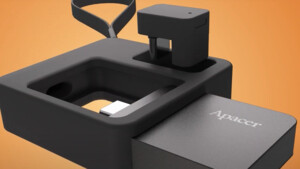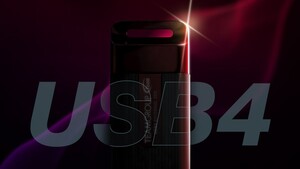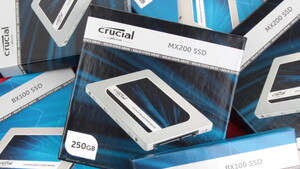Mit ddrescue erstelle ich derzeit für jemanden ein Image einer beschädigten NTFS-Partition.
Ausgaben SMART, fdisk, Mountversuch, siehe unten.
Windows lässt sich nicht booten, wenn die Festplatte, auf der die Partition liegt angeschlossen ist,
weil Windows vermutlich versucht die Festplatte zu mounten.
Linux bootet ohne Probleme. Mounten lässt sich die Festplatte unter Linux allerdings nicht.
Das mit ddrescue erstellte Teil-Image lässt sich nicht mounten.
Schätzungweise dürfte sich auch nicht das fertige Image ohne Reparatur einhängen lassen.
Probeweise hatte ich mal ein Teilabbild einer fehlerfreien 2GB NTFS-Partition erstellt;
das ließ sich ohne Probleme einhängen und auslesen.
Von dem Teilimage hatte ich schon mal Daten mit foremost und photorec gezogen.
Der große Nachteil ist allerdings,
dass die wiederhergestellten Dateien ihren ursprünglichen Dateinamen verloren haben.
Sollte sich das fertige Image reparieren lassen, sollten sich die Daten inklusive der eigentlichen Dateinamen auslesen lassen.
Daher meine Frage:
Welche Möglichkeiten gibt es das fertige Image zu reparieren, um es dann mounten zu können?
Vielleicht chkdsk?
Allerdings hatte chkdsk schon erfolglos beim Systemstart versucht (auf dem Computer, auf dem die Festplatte ursprünglich lief) das Dateisystem zu reparieren.
fdisk zur Festplatte.
smartctl gibt besorgniserregendes zu der Festplatte aus.
Der Kurztest musste abgebrochen werden, weil jeweils 10% Rest übrigblieben.
Mount-Versuche unter Linux:
Ausgaben SMART, fdisk, Mountversuch, siehe unten.
Windows lässt sich nicht booten, wenn die Festplatte, auf der die Partition liegt angeschlossen ist,
weil Windows vermutlich versucht die Festplatte zu mounten.
Linux bootet ohne Probleme. Mounten lässt sich die Festplatte unter Linux allerdings nicht.
Das mit ddrescue erstellte Teil-Image lässt sich nicht mounten.
Schätzungweise dürfte sich auch nicht das fertige Image ohne Reparatur einhängen lassen.
Probeweise hatte ich mal ein Teilabbild einer fehlerfreien 2GB NTFS-Partition erstellt;
das ließ sich ohne Probleme einhängen und auslesen.
Von dem Teilimage hatte ich schon mal Daten mit foremost und photorec gezogen.
Der große Nachteil ist allerdings,
dass die wiederhergestellten Dateien ihren ursprünglichen Dateinamen verloren haben.
Sollte sich das fertige Image reparieren lassen, sollten sich die Daten inklusive der eigentlichen Dateinamen auslesen lassen.
Daher meine Frage:
Welche Möglichkeiten gibt es das fertige Image zu reparieren, um es dann mounten zu können?
Vielleicht chkdsk?
Allerdings hatte chkdsk schon erfolglos beim Systemstart versucht (auf dem Computer, auf dem die Festplatte ursprünglich lief) das Dateisystem zu reparieren.
fdisk zur Festplatte.
Code:
Disk /dev/sdb: 1.82 TiB, 2000398934016 bytes, 3907029168 sectors
Disk model: ST2000DM001-1ER1
Units: sectors of 1 * 512 = 512 bytes
Sector size (logical/physical): 512 bytes / 4096 bytes
I/O size (minimum/optimal): 4096 bytes / 4096 bytes
Disklabel type: gpt
Disk identifier: 279B3F20-BEBC-4C6D-BF25-E54B6081AF20
Device Start End Sectors Size Type
/dev/sdb1 34 262177 262144 128M Microsoft reserved
/dev/sdb2 264192 3907028991 3906764800 1.8T Microsoft basic data
Partition 1 does not start on physical sector boundary.smartctl gibt besorgniserregendes zu der Festplatte aus.
Der Kurztest musste abgebrochen werden, weil jeweils 10% Rest übrigblieben.
Code:
smartctl 7.1 2019-12-30 r5022 [x86_64-linux-5.4.78-1-lts] (local build)
Copyright (C) 2002-19, Bruce Allen, Christian Franke, www.smartmontools.org
=== START OF INFORMATION SECTION ===
Model Family: Seagate Barracuda 7200.14 (AF)
Device Model: ST2000DM001-1ER164
Serial Number: W4Z40D7P
LU WWN Device Id: 5 000c50 09d45417a
Firmware Version: CC26
User Capacity: 2,000,398,934,016 bytes [2.00 TB]
Sector Sizes: 512 bytes logical, 4096 bytes physical
Rotation Rate: 7200 rpm
Form Factor: 3.5 inches
Device is: In smartctl database [for details use: -P show]
ATA Version is: ACS-2, ACS-3 T13/2161-D revision 3b
SATA Version is: SATA 3.1, 6.0 Gb/s (current: 6.0 Gb/s)
Local Time is: Tue Jan 19 20:26:57 2021 UTC
SMART support is: Available - device has SMART capability.
SMART support is: Enabled
=== START OF READ SMART DATA SECTION ===
SMART overall-health self-assessment test result: PASSED
General SMART Values:
Offline data collection status: (0x00) Offline data collection activity
was never started.
Auto Offline Data Collection: Disabled.
Self-test execution status: ( 17) The self-test routine was aborted by
the host.
Total time to complete Offline
data collection: ( 80) seconds.
Offline data collection
capabilities: (0x73) SMART execute Offline immediate.
Auto Offline data collection on/off support.
Suspend Offline collection upon new
command.
No Offline surface scan supported.
Self-test supported.
Conveyance Self-test supported.
Selective Self-test supported.
SMART capabilities: (0x0003) Saves SMART data before entering
power-saving mode.
Supports SMART auto save timer.
Error logging capability: (0x01) Error logging supported.
General Purpose Logging supported.
Short self-test routine
recommended polling time: ( 1) minutes.
Extended self-test routine
recommended polling time: ( 208) minutes.
Conveyance self-test routine
recommended polling time: ( 2) minutes.
SCT capabilities: (0x1085) SCT Status supported.
SMART Attributes Data Structure revision number: 10
Vendor Specific SMART Attributes with Thresholds:
ID# ATTRIBUTE_NAME FLAG VALUE WORST THRESH TYPE UPDATED WHEN_FAILED RAW_VALUE
1 Raw_Read_Error_Rate 0x000f 116 068 006 Pre-fail Always - 105642608
3 Spin_Up_Time 0x0003 096 096 000 Pre-fail Always - 0
4 Start_Stop_Count 0x0032 100 100 020 Old_age Always - 219
5 Reallocated_Sector_Ct 0x0033 097 097 010 Pre-fail Always - 3784
7 Seek_Error_Rate 0x000f 075 060 030 Pre-fail Always - 37800416
9 Power_On_Hours 0x0032 064 064 000 Old_age Always - 32054
10 Spin_Retry_Count 0x0013 100 100 097 Pre-fail Always - 0
12 Power_Cycle_Count 0x0032 100 100 020 Old_age Always - 219
183 Runtime_Bad_Block 0x0032 100 100 000 Old_age Always - 0
184 End-to-End_Error 0x0032 100 100 099 Old_age Always - 0
187 Reported_Uncorrect 0x0032 001 001 000 Old_age Always - 65535
188 Command_Timeout 0x0032 100 099 000 Old_age Always - 3 14 20
189 High_Fly_Writes 0x003a 098 098 000 Old_age Always - 2
190 Airflow_Temperature_Cel 0x0022 067 060 045 Old_age Always - 33 (Min/Max 17/34)
191 G-Sense_Error_Rate 0x0032 100 100 000 Old_age Always - 0
192 Power-Off_Retract_Count 0x0032 100 100 000 Old_age Always - 38
193 Load_Cycle_Count 0x0032 074 074 000 Old_age Always - 53896
194 Temperature_Celsius 0x0022 033 040 000 Old_age Always - 33 (0 16 0 0 0)
197 Current_Pending_Sector 0x0012 011 011 000 Old_age Always - 14688
198 Offline_Uncorrectable 0x0010 011 011 000 Old_age Offline - 14688
199 UDMA_CRC_Error_Count 0x003e 200 200 000 Old_age Always - 0
240 Head_Flying_Hours 0x0000 100 253 000 Old_age Offline - 24109h+21m+11.244s
241 Total_LBAs_Written 0x0000 100 253 000 Old_age Offline - 31054022609
242 Total_LBAs_Read 0x0000 100 253 000 Old_age Offline - 36231945969
SMART Error Log Version: 1
ATA Error Count: 2913 (device log contains only the most recent five errors)
CR = Command Register [HEX]
FR = Features Register [HEX]
SC = Sector Count Register [HEX]
SN = Sector Number Register [HEX]
CL = Cylinder Low Register [HEX]
CH = Cylinder High Register [HEX]
DH = Device/Head Register [HEX]
DC = Device Command Register [HEX]
ER = Error register [HEX]
ST = Status register [HEX]
Powered_Up_Time is measured from power on, and printed as
DDd+hh:mm:SS.sss where DD=days, hh=hours, mm=minutes,
SS=sec, and sss=millisec. It "wraps" after 49.710 days.
Error 2913 occurred at disk power-on lifetime: 32039 hours (1334 days + 23 hours)
When the command that caused the error occurred, the device was active or idle.
After command completion occurred, registers were:
ER ST SC SN CL CH DH
-- -- -- -- -- -- --
40 53 00 9e 9a 61 04 Error: UNC at LBA = 0x04619a9e = 73505438
Commands leading to the command that caused the error were:
CR FR SC SN CL CH DH DC Powered_Up_Time Command/Feature_Name
-- -- -- -- -- -- -- -- ---------------- --------------------
60 00 01 9e 9a 61 44 00 00:07:11.529 READ FPDMA QUEUED
ef 10 02 00 00 00 a0 00 00:07:11.520 SET FEATURES [Enable SATA feature]
27 00 00 00 00 00 e0 00 00:07:11.493 READ NATIVE MAX ADDRESS EXT [OBS-ACS-3]
ec 00 00 00 00 00 a0 00 00:07:11.493 IDENTIFY DEVICE
ef 03 46 00 00 00 a0 00 00:07:11.480 SET FEATURES [Set transfer mode]
Error 2912 occurred at disk power-on lifetime: 32039 hours (1334 days + 23 hours)
When the command that caused the error occurred, the device was active or idle.
After command completion occurred, registers were:
ER ST SC SN CL CH DH
-- -- -- -- -- -- --
40 53 00 9b 9a 61 04 Error: UNC at LBA = 0x04619a9b = 73505435
Commands leading to the command that caused the error were:
CR FR SC SN CL CH DH DC Powered_Up_Time Command/Feature_Name
-- -- -- -- -- -- -- -- ---------------- --------------------
60 00 01 9e 9a 61 44 00 00:07:07.654 READ FPDMA QUEUED
60 00 03 9b 9a 61 44 00 00:07:07.653 READ FPDMA QUEUED
ef 10 02 00 00 00 a0 00 00:07:07.644 SET FEATURES [Enable SATA feature]
27 00 00 00 00 00 e0 00 00:07:07.617 READ NATIVE MAX ADDRESS EXT [OBS-ACS-3]
ec 00 00 00 00 00 a0 00 00:07:07.617 IDENTIFY DEVICE
Error 2911 occurred at disk power-on lifetime: 32039 hours (1334 days + 23 hours)
When the command that caused the error occurred, the device was active or idle.
After command completion occurred, registers were:
ER ST SC SN CL CH DH
-- -- -- -- -- -- --
40 53 00 9f 9a 61 04 Error: UNC at LBA = 0x04619a9f = 73505439
Commands leading to the command that caused the error were:
CR FR SC SN CL CH DH DC Powered_Up_Time Command/Feature_Name
-- -- -- -- -- -- -- -- ---------------- --------------------
60 00 03 9b 9a 61 44 00 00:07:03.807 READ FPDMA QUEUED
60 00 01 9e 9a 61 44 00 00:07:03.807 READ FPDMA QUEUED
60 00 01 9f 9a 61 44 00 00:07:03.806 READ FPDMA QUEUED
ef 10 02 00 00 00 a0 00 00:07:02.860 SET FEATURES [Enable SATA feature]
27 00 00 00 00 00 e0 00 00:07:02.833 READ NATIVE MAX ADDRESS EXT [OBS-ACS-3]
Error 2910 occurred at disk power-on lifetime: 32039 hours (1334 days + 23 hours)
When the command that caused the error occurred, the device was active or idle.
After command completion occurred, registers were:
ER ST SC SN CL CH DH
-- -- -- -- -- -- --
40 53 00 98 9a 61 04 Error: UNC at LBA = 0x04619a98 = 73505432
Commands leading to the command that caused the error were:
CR FR SC SN CL CH DH DC Powered_Up_Time Command/Feature_Name
-- -- -- -- -- -- -- -- ---------------- --------------------
60 00 01 9f 9a 61 44 00 00:06:59.095 READ FPDMA QUEUED
60 00 01 9e 9a 61 44 00 00:06:59.094 READ FPDMA QUEUED
60 00 03 9b 9a 61 44 00 00:06:59.094 READ FPDMA QUEUED
60 00 03 98 9a 61 44 00 00:06:59.094 READ FPDMA QUEUED
60 00 00 b0 08 64 40 00 00:06:59.093 READ FPDMA QUEUED
Error 2909 occurred at disk power-on lifetime: 32039 hours (1334 days + 23 hours)
When the command that caused the error occurred, the device was active or idle.
After command completion occurred, registers were:
ER ST SC SN CL CH DH
-- -- -- -- -- -- --
40 53 00 98 9a 61 04 Error: UNC at LBA = 0x04619a98 = 73505432
Commands leading to the command that caused the error were:
CR FR SC SN CL CH DH DC Powered_Up_Time Command/Feature_Name
-- -- -- -- -- -- -- -- ---------------- --------------------
60 00 00 b0 08 64 40 00 00:06:55.248 READ FPDMA QUEUED
60 00 18 98 9a 61 44 00 00:06:55.248 READ FPDMA QUEUED
ef 10 02 00 00 00 a0 00 00:06:55.238 SET FEATURES [Enable SATA feature]
27 00 00 00 00 00 e0 00 00:06:55.212 READ NATIVE MAX ADDRESS EXT [OBS-ACS-3]
ec 00 00 00 00 00 a0 00 00:06:55.212 IDENTIFY DEVICE
SMART Self-test log structure revision number 1
Num Test_Description Status Remaining LifeTime(hours) LBA_of_first_error
# 1 Short offline Aborted by host 10% 32054 -
# 2 Short offline Aborted by host 10% 32054 -
SMART Selective self-test log data structure revision number 1
SPAN MIN_LBA MAX_LBA CURRENT_TEST_STATUS
1 0 0 Not_testing
2 0 0 Not_testing
3 0 0 Not_testing
4 0 0 Not_testing
5 0 0 Not_testing
Selective self-test flags (0x0):
After scanning selected spans, do NOT read-scan remainder of disk.
If Selective self-test is pending on power-up, resume after 0 minute delay.Mount-Versuche unter Linux:
Code:
[root@sysrescue ~]# mount /dev/sdb2 /mnt/sdb2/
The disk contains an unclean file system (0, 0).
Metadata kept in Windows cache, refused to mount.
Falling back to read-only mount because the NTFS partition is in an
unsafe state. Please resume and shutdown Windows fully (no hibernation
or fast restarting.)
ntfs_attr_pread_i: ntfs_pread failed: Input/output error
Failed to calculate free MFT records: Input/output error
NTFS is either inconsistent, or there is a hardware fault, or it's a
SoftRAID/FakeRAID hardware. In the first case run chkdsk /f on Windows
then reboot into Windows twice. The usage of the /f parameter is very
important! If the device is a SoftRAID/FakeRAID then first activate
it and mount a different device under the /dev/mapper/ directory, (e.g.
/dev/mapper/nvidia_eahaabcc1). Please see the 'dmraid' documentation
for more details.
[root@sysrescue ~]# mount /dev/sdb /mnt/sdb2/
mount: /mnt/sdb2: wrong fs type, bad option, bad superblock on /dev/sdb, missing codepage or helper program, or other error.
[root@sysrescue ~]# mount /mnt/sdd1/st2000.img /mnt/img/
mount: /mnt/img: wrong fs type, bad option, bad superblock on /dev/loop1, missing codepage or helper program, or other error.
[root@sysrescue ~]#


